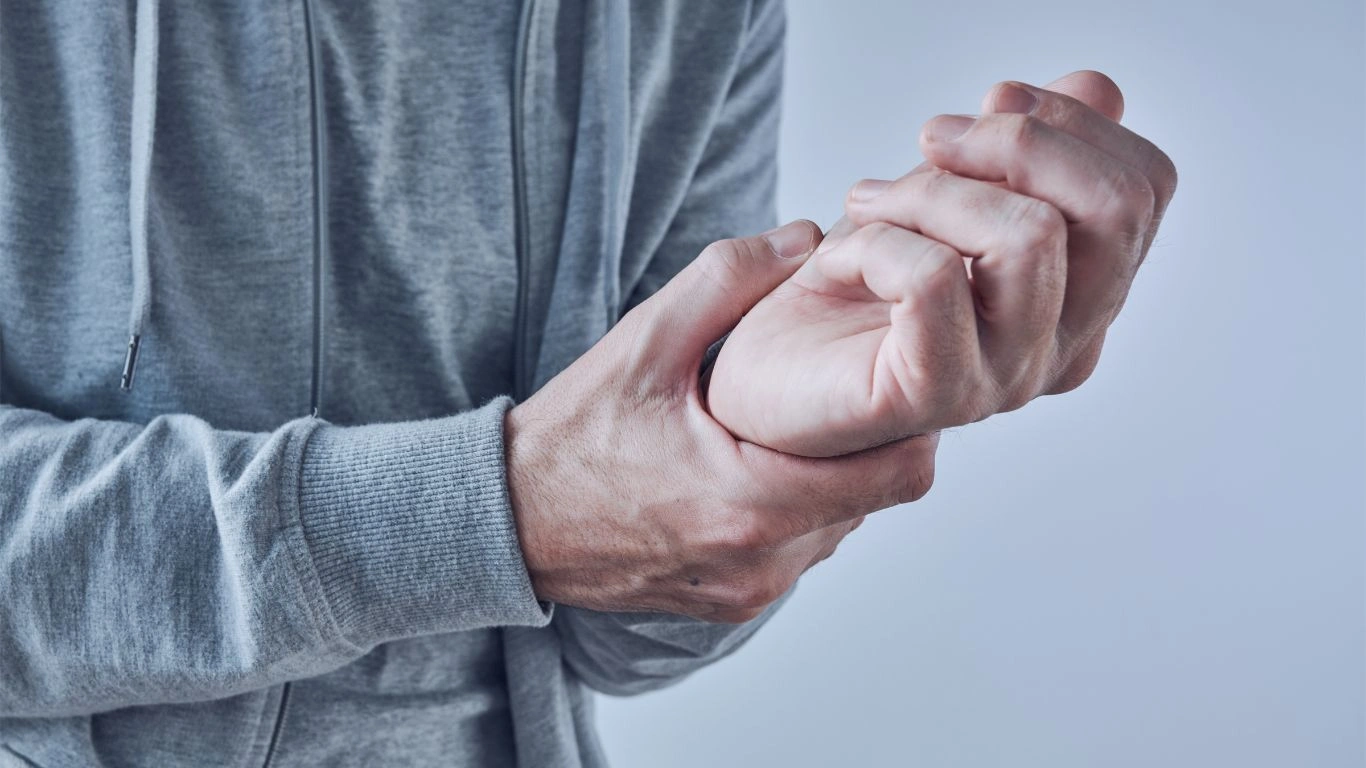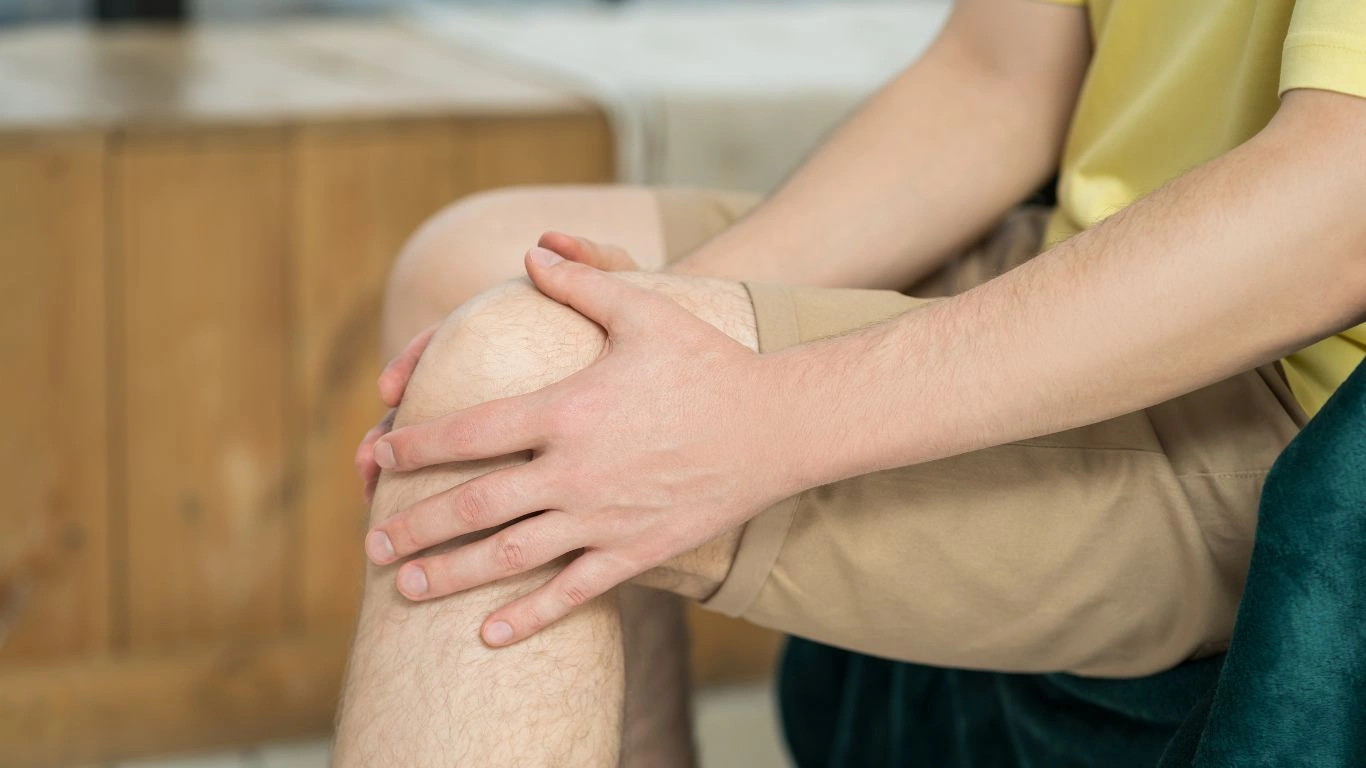How to Find Rheumatoid Arthritis Pain Relief Without Medication – Effective Solutions for Lasting Relief
Rheumatoid arthritis (RA) is an autoimmune disease that causes joint pain, stiffness, and inflammation. As someone who specializes in diagnosing, treating, and managing this condition, I know that finding effective ways to reduce RA pain without relying solely on medications is a significant concern for many patients. Whether you’re new to RA or have been living with it for years, you may be seeking alternatives to the traditional medical treatments that often come with side effects.
While medications can certainly play a crucial role in managing symptoms, there are a variety of natural, non-pharmacological methods to relieve pain and improve your quality of life. In this article, we’ll explore practical strategies for finding rheumatoid arthritis pain relief without medication, drawing from both my clinical experience and insights from my patients who have found success through these alternative approaches.
Understanding Rheumatoid Arthritis Pain and Its Impact on Daily Life

Before diving into how you can manage RA pain without medication, let’s first take a look at what rheumatoid arthritis pain actually feels like and how it impacts your daily life. For many people with RA, the pain is chronic, meaning it’s persistent and doesn’t go away. It often affects both sides of the body symmetrically, with the wrists, hands, knees, and feet being the most common joints involved. Unlike other forms of arthritis, RA can also lead to systemic symptoms, such as fatigue, fever, and weight loss.
The pain itself can range from mild discomfort to debilitating pain that makes even simple activities, like brushing your hair or tying your shoes, incredibly difficult. Along with pain, many RA patients also experience stiffness, especially in the mornings, making it hard to get moving. The joints may feel swollen and warm to the touch, and over time, RA can cause joint deformities if left untreated. Understanding the nature of RA pain is key to finding the right strategies to relieve it.
How to Find Rheumatoid Arthritis Pain Relief Without Medication
While medications are often necessary for managing RA, they don’t have to be the only tool in your arsenal. Many patients I work with have found great relief using natural and lifestyle-based approaches. Here’s a breakdown of some of the most effective ways to reduce RA pain without relying on prescription drugs:
1. Embrace a Holistic Approach to Diet

One of the most powerful tools in managing rheumatoid arthritis pain is your diet. Many foods can either exacerbate inflammation or help to reduce it. I’ve seen firsthand how patients who focus on eating anti-inflammatory foods experience less pain and stiffness in their joints.
- Omega-3 Fatty Acids: Found in foods like salmon, walnuts, and flaxseeds, omega-3 fatty acids have natural anti-inflammatory properties that can help reduce RA pain.
- Fruits and Vegetables: Colorful fruits and vegetables like berries, spinach, kale, and broccoli are packed with antioxidants, which help combat inflammation in the body.
- Turmeric and Ginger: Both turmeric and ginger contain compounds that can fight inflammation. Adding them to your meals or drinking them in teas can provide a soothing effect.
Conversely, certain foods can increase inflammation. It’s a good idea to limit your intake of processed foods, refined sugars, and red meat, as these can worsen the symptoms of RA. I recommend patients focus on whole, minimally processed foods and aim to keep their gut healthy, as this can also influence inflammation levels.
2. The Power of Physical Activity and Movement

Exercise may seem like the last thing you want to do when you’re in pain, but trust me—it can make a world of difference. It’s important to engage in low-impact activities that keep your joints moving without causing additional strain. Patients I’ve worked with have reported reduced pain and stiffness when they incorporate regular movement into their daily routines.
Gentle exercises like swimming, cycling, or walking can help improve flexibility and strengthen the muscles around your joints, which can offer support and relieve stress on the affected areas. In fact, regular movement can increase the production of synovial fluid in your joints, which helps lubricate them and reduce friction.
If you’re just getting started, I suggest starting with stretches or yoga designed for RA. There are many online resources and local classes that specialize in arthritis-friendly exercises. Remember to listen to your body and adjust the intensity to suit your current condition. Over time, you’ll likely notice improvements in your mobility and a reduction in pain.
3. Heat and Cold Therapy for Pain Relief
Both heat and cold therapies are simple yet effective ways to manage rheumatoid arthritis pain at home. I’ve had many patients report relief from inflammation and stiffness by applying either heat or cold to their painful joints.
- Cold Therapy: Cold packs can numb the area and reduce inflammation, especially during flare-ups. Applying an ice pack wrapped in a cloth to the joint for 15-20 minutes at a time can help ease pain.
- Heat Therapy: Warm baths or heating pads can relax tense muscles and increase blood flow, which may help with pain and stiffness. Heat is particularly useful for soothing discomfort in the morning or after periods of inactivity.
Both methods are easily accessible and can be done at home, making them convenient options for managing RA pain naturally.
4. Stress Management and Mental Health
Chronic pain, especially when it’s persistent like in rheumatoid arthritis, can take a toll on your mental health. In my experience, managing stress is just as important as managing physical symptoms. Stress can actually trigger flare-ups and make pain feel more intense. So, it’s crucial to incorporate stress-relieving techniques into your daily routine.
- Mindfulness and Meditation: Practices like mindfulness meditation have been shown to reduce stress, anxiety, and pain perception in people with RA.
- Deep Breathing Exercises: Simple breathing exercises can help calm your nervous system and lower pain sensitivity.
- Therapy or Counseling: Talking to a mental health professional can also help you navigate the emotional challenges of living with a chronic illness.
Finding ways to unwind and manage stress can help reduce both the mental and physical burden of rheumatoid arthritis pain.
Exploring Alternative Therapies for Rheumatoid Arthritis Pain Relief

If you’re looking for natural methods to manage rheumatoid arthritis pain, alternative therapies may provide significant relief. Over the years, I’ve had patients who’ve shared their success with therapies like acupuncture, massage, and chiropractic care. These treatments, while not substitutes for medical management, can be great complements in your overall pain management strategy. Let’s dive into some of the most popular and effective alternatives I’ve seen work for RA pain relief:
1. Acupuncture for Rheumatoid Arthritis
Acupuncture, a traditional Chinese medicine practice, has been used for centuries to treat various ailments, including chronic pain. The principle behind acupuncture is that inserting fine needles into specific points on the body helps restore balance and energy flow, which may alleviate pain and inflammation.
Many of my RA patients have reported positive outcomes after acupuncture sessions. They say it helps them manage flare-ups and reduces stiffness and swelling. Acupuncture is thought to trigger the release of endorphins, the body’s natural painkillers, which may help ease discomfort. Additionally, acupuncture can promote relaxation and improve circulation, both of which are beneficial for reducing inflammation.
If you’re new to acupuncture, I suggest finding a licensed practitioner who specializes in treating patients with autoimmune disorders. They can tailor the treatment to address your specific symptoms and needs.
2. Therapeutic Massage for Joint Pain Relief

Massage therapy is another effective alternative treatment I’ve seen many patients benefit from. While it may not be a one-time miracle cure, regular massage sessions can help reduce muscle tension, improve blood flow, and alleviate joint pain in people with RA. Techniques like Swedish massage, deep tissue massage, and trigger point therapy have shown promise in easing discomfort.
When it comes to RA, it’s important to communicate with your massage therapist about which areas are most painful and tender. Gentle pressure on sore joints or muscles can relieve tension without aggravating inflammation. Some massage therapists even specialize in working with clients who have arthritis, and they’ll know how to adjust their techniques to suit your needs. In fact, I’ve had many patients tell me that after a massage session, they feel less stiff and experience improved mobility in their joints for days afterward.
3. Chiropractic Care for Joint and Spine Alignment
Chiropractic care focuses on the alignment of the spine and joints. Through manual manipulation and other hands-on treatments, chiropractors aim to relieve pain, reduce inflammation, and improve mobility. While chiropractic care isn’t a primary treatment for rheumatoid arthritis, I’ve found that many RA patients benefit from it as a supplementary treatment.
Chiropractors can use specific techniques to adjust joints that have become misaligned due to inflammation or stiffness, which can provide relief from pain and restore function. Some studies have shown that chiropractic adjustments may help reduce RA symptoms by improving joint motion and reducing inflammation.
As with any treatment, it’s essential to work with a chiropractor who has experience treating patients with arthritis. They will know how to adjust their approach to ensure your safety and comfort while maximizing the benefits of the treatment.
Mind-Body Techniques for Managing Rheumatoid Arthritis Pain
Living with rheumatoid arthritis is challenging, and managing the pain can sometimes feel like a full-time job. That’s why incorporating mind-body techniques into your routine is essential. These practices not only help manage physical symptoms but also address the mental and emotional toll that chronic pain takes on your well-being.
1. Mindfulness Meditation for Pain Reduction
Mindfulness meditation has gained significant popularity over the years for its ability to reduce stress and promote relaxation. It’s a technique that involves focusing your attention on the present moment while acknowledging and accepting any pain or discomfort without judgment. By practicing mindfulness, you can break the cycle of pain and stress, allowing your body and mind to relax.
In my clinical experience, many RA patients who practice mindfulness meditation report a significant reduction in pain perception. Not only does mindfulness help them feel less stressed, but it also enables them to cope with the emotional side of living with a chronic condition. It doesn’t require any special equipment, and you can practice it anywhere—whether that’s sitting on the couch or lying in bed at night.
For those just starting, there are many guided meditation apps available that provide short, focused sessions on managing chronic pain. These can be a great way to introduce mindfulness into your routine and begin noticing its benefits over time.
2. Yoga and Tai Chi for Gentle Movement
Yoga and Tai Chi are ancient practices that combine gentle movements, deep breathing, and meditation to help improve flexibility, strength, and mental clarity. For people with rheumatoid arthritis, both practices can be extremely beneficial in managing pain and improving mobility without putting too much stress on the joints.

Both yoga and Tai Chi emphasize slow, controlled movements that promote joint mobility and reduce stiffness. They also incorporate deep breathing techniques that can help calm the mind and reduce stress. I’ve seen firsthand how patients who regularly practice these activities experience less pain, more flexibility, and a better sense of well-being.
Even if you’ve never tried yoga or Tai Chi before, there are beginner-friendly classes available that cater specifically to people with arthritis. Many local studios or community centers offer classes for arthritis patients, ensuring that you’re practicing the movements in a way that’s safe and beneficial for your joints.
3. Cognitive Behavioral Therapy (CBT) for Pain Management
Cognitive Behavioral Therapy (CBT) is a type of therapy that helps people change negative thought patterns that may contribute to pain and stress. When it comes to chronic conditions like rheumatoid arthritis, CBT can be incredibly useful in helping you manage your pain psychologically. By learning to reframe negative thoughts about your condition, you can reduce anxiety and depression, which can, in turn, help with pain management.
I’ve had patients who found that CBT helped them cope with the emotional side of RA and enabled them to develop better strategies for managing their pain. It’s a technique that focuses on changing the way you perceive and react to pain, rather than focusing solely on eliminating it. Working with a trained therapist, you can develop coping mechanisms that make living with RA more manageable.
Incorporating Lifestyle Changes to Manage Rheumatoid Arthritis Pain

Managing rheumatoid arthritis pain without medication isn’t just about supplements or therapies—it’s also about making thoughtful, intentional lifestyle changes. I’ve seen many of my patients experience long-term relief simply by making small adjustments to their daily routines. These lifestyle changes don’t require drastic measures, but they can significantly improve your quality of life over time. Let’s explore some simple but powerful shifts that can make a big difference in managing your RA symptoms:
1. Prioritizing Rest and Sleep for Better Recovery
Rest and sleep are essential when it comes to managing any chronic condition, and RA is no exception. One of the things I often emphasize to my patients is the importance of sleep in reducing inflammation and giving your body time to recover. While rest doesn’t directly treat rheumatoid arthritis, it helps your immune system function properly and may reduce flare-ups.
Getting quality sleep helps your body repair damaged tissues and reduces the production of pro-inflammatory cytokines, which are molecules that increase inflammation. Inadequate rest can worsen symptoms, making it more challenging to manage pain. Many of my patients with RA have shared how they experience significantly less stiffness and fatigue when they prioritize getting enough rest each night.
To improve your sleep, consider creating a relaxing bedtime routine. Avoid caffeine and electronics before bed, and try using relaxation techniques, such as deep breathing or a warm bath, to prepare your body for sleep. If joint pain tends to worsen at night, using supportive pillows or adjustable beds can help ease pressure on sensitive areas.
2. Building a Support System and Staying Connected
Living with rheumatoid arthritis can feel isolating at times, especially when pain interferes with your ability to engage in daily activities. However, having a strong support system can make a world of difference in how you manage both the physical and emotional aspects of RA. Over the years, I’ve witnessed the positive impact that family, friends, and online communities can have on patients who feel overwhelmed by their condition.
It’s crucial to stay connected with those who understand your journey. Talking to someone who “gets it” can be incredibly therapeutic. I also encourage patients to find local or online support groups where they can share experiences, tips, and advice with others who understand the challenges of living with rheumatoid arthritis.
Additionally, maintaining relationships with loved ones ensures that you don’t face your struggles alone. When you have a network of people who offer emotional support and even practical help—whether that’s assistance with daily tasks or just being there to listen—it can make living with RA much more manageable.
3. Regular Monitoring of Your Symptoms and Progress
Another important aspect of managing rheumatoid arthritis pain without medication is tracking your symptoms regularly. I always tell my patients that knowing your body is key. By keeping an eye on flare-ups, changes in pain intensity, or new joint involvement, you can identify patterns and triggers that might be contributing to your discomfort.
When you actively monitor your condition, you’ll be able to make informed decisions about your lifestyle adjustments and therapy choices. Many patients find it helpful to keep a pain journal, noting daily pain levels, specific joint involvement, activities, and any changes in diet or exercise. This journal can help you and your healthcare team spot trends and refine your treatment plan.
In addition, tracking progress allows you to celebrate small victories. Even on days when your pain is manageable, it’s worth noting, as it reinforces the positive changes you’ve made to improve your health. Plus, it can motivate you to keep going, even on the tough days.
Natural Supplements to Consider for Rheumatoid Arthritis Pain Relief
When it comes to finding relief for rheumatoid arthritis pain without relying on medications, many people turn to natural supplements. These supplements may help support your body in managing inflammation, improving joint health, and even reducing pain. It’s important to note that supplements should be used in conjunction with, not as a replacement for, professional medical care.
1. Omega-3 Fatty Acids
Omega-3 fatty acids are a powerful anti-inflammatory nutrient found in fish oil, flaxseeds, and walnuts. Multiple studies have shown that omega-3s can reduce the production of inflammatory molecules in the body, which is especially beneficial for people with rheumatoid arthritis. Incorporating omega-3-rich foods into your diet or taking a high-quality supplement can help reduce joint pain and stiffness.
In my experience, patients who increase their omega-3 intake often report feeling less inflammation and improved joint mobility. However, it’s always wise to consult your doctor before starting any new supplement regimen, as they can interact with other medications or treatments you may be using.
2. Turmeric and Curcumin
Turmeric is a popular spice with powerful anti-inflammatory properties, thanks to its active compound curcumin. Many RA patients have found that taking curcumin supplements helps to reduce joint inflammation and relieve pain. In fact, several studies have indicated that curcumin may be as effective as some nonsteroidal anti-inflammatory drugs (NSAIDs) in treating arthritis symptoms.
While turmeric can be added to meals, most studies suggest that taking curcumin in supplement form is more effective for pain relief due to its higher concentration. Again, I advise speaking with your healthcare provider to determine the best dosage for you.
3. Glucosamine and Chondroitin
Glucosamine and chondroitin are compounds found naturally in the body that play a key role in joint health. Some studies suggest that taking glucosamine and chondroitin supplements may help protect cartilage, reduce joint pain, and improve function. Though results can vary, these supplements are often used by patients with osteoarthritis and RA to support joint integrity and reduce discomfort.
In my experience, patients who use glucosamine and chondroitin regularly often notice a reduction in joint tenderness and an improvement in their range of motion. However, like any supplement, it’s important to discuss the potential benefits and risks with your healthcare provider before starting.
References
To provide more in-depth information on rheumatoid arthritis and its management, I recommend checking out the following trusted sources:
- Health Usias – Rheumatoid Arthritis Resources
- NCBI – Omega-3 Fatty Acids and Rheumatoid Arthritis
- NCBI – Turmeric and Curcumin for Pain Relief
- American College of Rheumatology – Resources on RA Management
Disclaimer
The information provided in this article is intended for informational purposes only and should not be used as a substitute for professional medical advice. Always consult with your healthcare provider before starting any new treatment, supplement, or lifestyle change. Individual experiences may vary, and your healthcare team is the best resource for personalized care.

Tarra Nugroho is a dedicated Nurse Practitioner with a strong foundation in family and preventive care. She brings both compassion and clinical expertise to her practice, focusing on patient-centered care and health education. As a contributor to Healthusias.com, Tarra translates medical knowledge into clear, empowering articles on topics like women’s health, chronic disease management, and lifestyle medicine. Her mission is simple: help people feel seen, heard, and informed—both in the clinic and through the content she creates. When she’s not caring for patients, Tarra enjoys weekend hikes, plant-based cooking, and curling up with a good health podcast.






